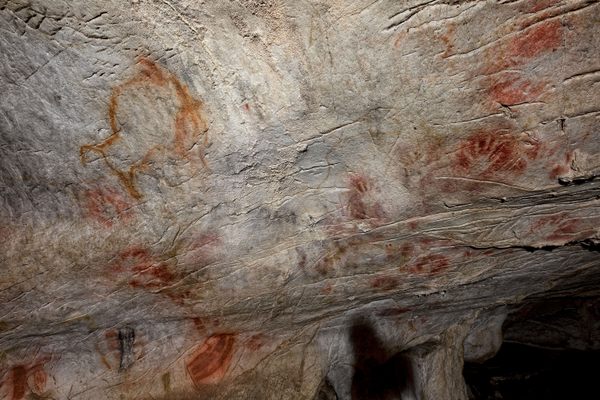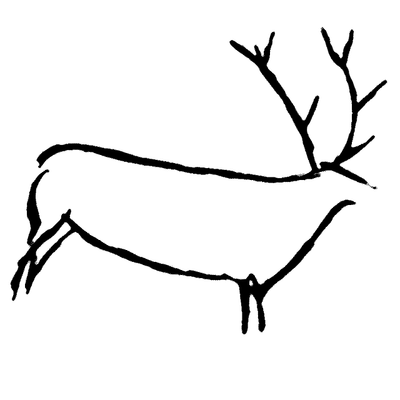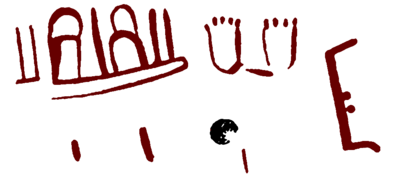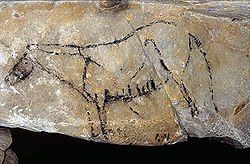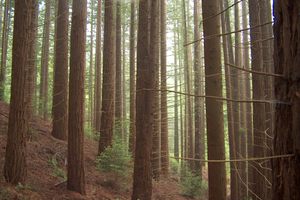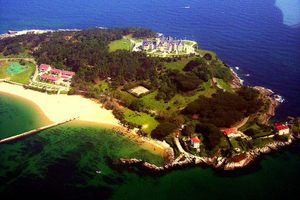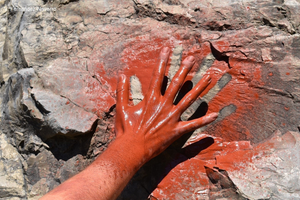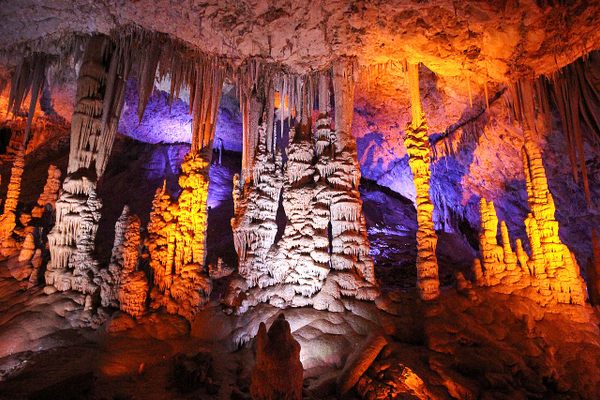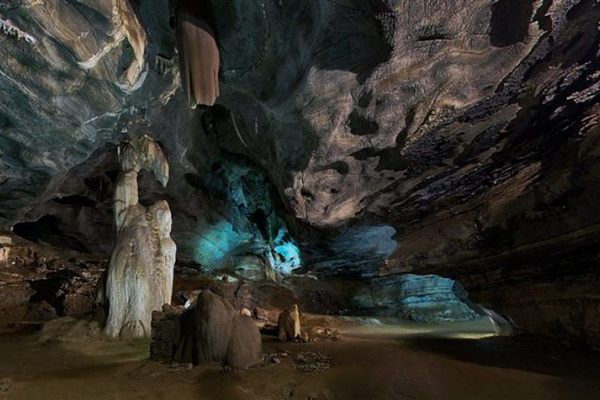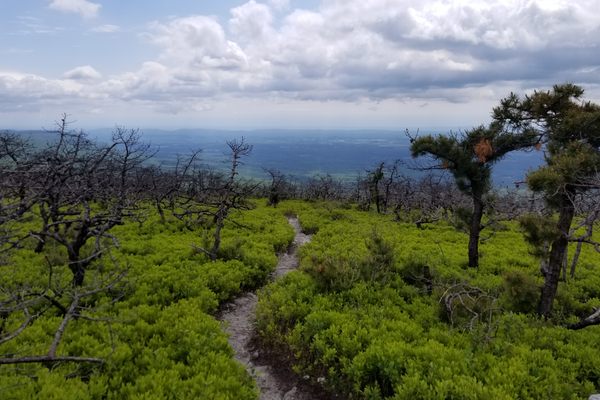About
The north of Spain is home to a number of caves with important cave paintings, such as Altamira, El Pindal, El Soplao, and Tito Bustillo. But the caves of Monte Castillo, also known as “the troglodyte city,” stand out in the region. Four caverns located on the hill are filled with paintings that show a wide range of animals, hand stencils, dotted lines, and symbols. They are also the site of spectacular geological formations and stalactite waterfalls.
Monte Castillo is a conical limestone hill that measures 355 meters (1165 feet) tall. The hill is pierced with countless holes, passages, corridors, and large caverns that were inhabited during the last 150,000 years. There are four caves at the site: El Castillo, La Pasiega, Las Monedas and Las Chimeneas, along with an area known as La Flecha, where a deposit of stone arrows was found.
The most significant of these caves is the cave of El Castillo. Discovered by the Spanish archaeologist Hermilio Alcalde del Río in 1903, the cave contains nearly 300 figures that date back to the earliest known presence of Homo sapiens in Europe. The cave's paintings feature animals (bison, deer, horses, goats, and a mammoth), abstract figures, and even a figure that resembles the Corona Borealis constellation. There is also an area filled with hand stencils known as the "Gallery of the Hands," where a disk of red ochre that dates to around 39,000 B.C.
La Pasiega, which was discovered in 1911, contains a huge gallery that measures 120 meters (394 feet) long, and features nearly 1,000 representations of animals and people. It also contains strange group of symbols known as "The Inscription."
The longest cave in Monte Castillo is Las Monedas, which was discovered in 1952. It is spectacular for the geological formations and the natural color of its stalactite waterfalls. A wide variety of animals are represented in the paintings of Las Monedas, including reindeer, horses, goats and a single bison.
Las Chimeneas is a cavity consisting of two floors connected by karst chimneys. The archaeological interest is focused on the lower floor, where the walls feature depictions of deer and reindeer, as well as symbols made with black paint.
Of all the caves at Monte Castillo, only El Castillo and Las Monedas are open the public.
Related Tags
Know Before You Go
From Puente Viesgo next to the villa's car park, located in the Llana neighborhood, take the CA-703 road that leads to Monte de El Castillo. After traveling 1.4 km (around a mile) you reach a car park from where you can walk to the Interpretation Center and the cavities that are open to the public (El Castillo and Las Monedas caves).
Community Contributors
Added By
Published
May 1, 2020
Sources
- https://es.wikipedia.org/wiki/Cueva_de_El_Castillo
- http://www.visual-arts-cork.com/prehistoric/castillo-cave-paintings.htm
- https://cuevas.culturadecantabria.com/el-castillo/
- https://www.cantabriarural.com/lugares-con-encanto/cuevas-del-monte-castillo-cuevas-de-puente-viesgo.html
- https://www.vallespasiegos.org/turismo/que-ver-y-que-hacer/que-ver-y-que-hacer2/item/1565-cuevas-prehist%C3%B3ricas-de-puente-viesgo
- http://apuntes.santanderlasalle.es/arte/prehistoria/franco_%20cantabrica/puente_viesgo.htm
- https://en.wikipedia.org/wiki/Cave_of_La_Pasiega
- https://cuevas.culturadecantabria.com/el-castillo-2/



